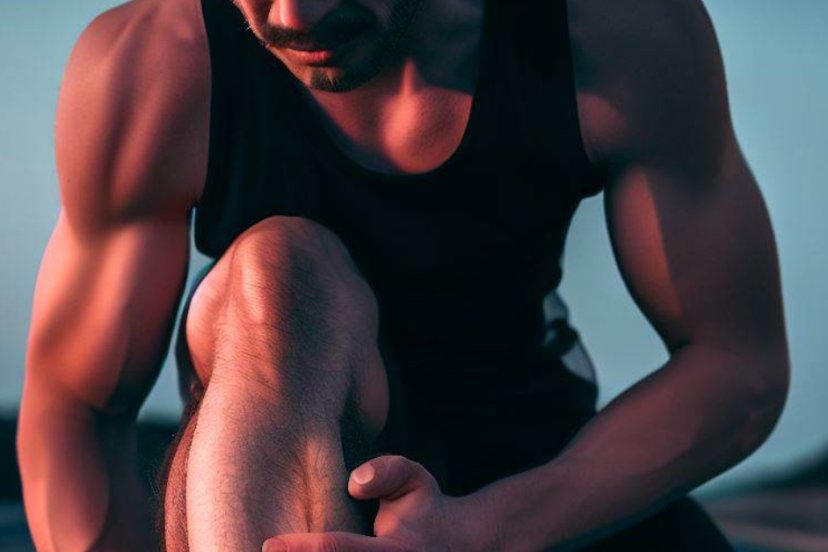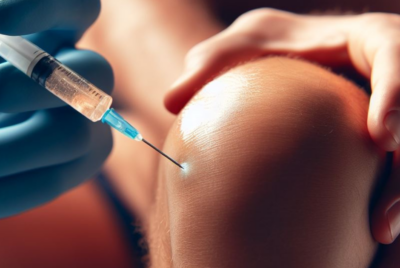Sharp Stabbing Knee Pain – Onset & Relief
Understanding Knee Pain

Meniscus Tears:
Meniscus tears refer to the damage or tearing of the rubbery cartilage discs in the knee joint. They are commonly caused by sudden twisting or direct impact to the knee, leading to pain, swelling, and difficulty in movement.
Ligament Injuries (such as ACL or PCL tears):
Ligament injuries, including ACL (anterior cruciate ligament) or PCL (posterior cruciate ligament) tears, occur when these crucial bands of tissue in the knee are overstretched or torn. Sports injuries or sudden movements can cause instability, pain, and limited mobility.
These two major ligaments are located inside the knee joint. The ACL runs diagonally in the center of the knee, while the PCL is positioned at the back of the knee. These ligaments play a crucial role in stabilizing the knee and preventing excessive forward and backward movement of the tibia (shinbone) in relation to the femur (thighbone). Injuries to the ACL or PCL can occur due to sudden twists, direct impact, or excessive force on the knee, leading to instability and compromised knee function.
Patellar Tendonitis:
Patellar tendonitis, also known as jumper’s knee, is an inflammation of the tendon connecting the kneecap (patella) to the shinbone. Repetitive jumping or excessive stress on the knee can lead to this condition, resulting in pain, swelling, and difficulty in activities involving the knee.
Osteoarthritis:
Osteoarthritis is a degenerative joint disease that commonly affects the knees. It occurs when the protective cartilage on the ends of bones wears down over time, leading to pain, stiffness, swelling, and reduced range of motion.
Bursitis:
Bursitis is the inflammation of the fluid-filled sacs (bursae) that cushion the joints. In the knee, excessive kneeling, repetitive motion, or direct trauma can cause bursitis, resulting in pain, swelling, and limited mobility.
IT Band Syndrome:
IT (iliotibial) band syndrome is a condition characterized by inflammation and irritation of the IT band, a thick band of tissue running along the outside of the thigh. Overuse, improper biomechanics, or muscle imbalances can lead to this syndrome, causing pain and tightness on the outer side of the knee. These conditions can be triggered by activities that involve sudden movements, overuse, or trauma to the knee joint. Symptoms may include sharp, intense pain, swelling, difficulty walking or bending the knee, and a feeling of instability.
Seek Professional Healthcare
Treatment Options
- Rest and activity modification
- Physical therapy exercises to strengthen the surrounding muscles and improve joint stability
- Pain medications and anti-inflammatory drugs
- Assistive devices like braces or crutches for support
Lifestyle Modifications
Pain Management Techniques
- Cold and heat therapy: Applying cold packs or ice to the affected area can help reduce swelling and numb the pain. Heat therapy, such as using warm compresses or taking warm showers, can help relax muscles and ease discomfort.
- Over-the-counter pain relievers: Non-steroidal anti-inflammatory drugs (NSAIDs), such as ibuprofen or naproxen, can help reduce pain and inflammation. However, consult with a healthcare professional before taking any medication to ensure it’s suitable for you.
- Topical creams and ointments: There are topical creams and ointments available that can provide temporary pain relief. These products often contain ingredients like menthol or capsaicin, which create a cooling or warming sensation to alleviate discomfort.
Prevention Strategies
- Warm-up and stretching: Always warm up your body and stretch before engaging in physical activities or exercise. This helps prepare your muscles for movement and reduces the risk of strains or injuries.
- Proper technique: When participating in sports or engaging in physical activities, ensure you use proper technique and form. Incorrect movements can put excessive stress on your knee joints, leading to pain and injuries.
- Protective gear and equipment: If you’re involved in activities that pose a higher risk of knee injuries, such as contact sports or high-impact exercises, wear appropriate protective gear. This can include knee braces, padding, or helmets, depending on the activity.
Rehabilitation and Recovery
- Physical therapy: A physical therapist can design a customized rehabilitation program to help regain strength, flexibility, and stability in the knee joint. This may include exercises, stretches, and techniques to improve mobility and reduce pain.
- Gradual return to activity: It’s important to follow your healthcare professional’s guidelines and gradually return to your regular activities or sports. Rushing the process can increase the risk of reinjury.
Coping with Emotional Challenges
- Seek emotional support: Talk to your friends, family, or a therapist about your feelings and experiences. Sharing your emotions can provide relief and help you cope with the challenges.
- Practice stress management techniques: Engage in stress-relieving activities such as meditation, deep breathing
When to Seek Medical Help
- Sudden and severe pain that doesn’t improve with rest or self-care measures.
- Inability to bear weight on the affected leg.
- Visible deformity or swelling in the knee joint.
- Limited range of motion in the knee.
- Numbness or tingling sensation in the leg or foot.
- Signs of infection, such as fever, redness, warmth, or discharge from the knee.
Alternative Therapies for healing Sharp Stabbing Knee Pain
- Acupuncture: This traditional Chinese medicine technique involves inserting thin needles into specific points on the body to help alleviate pain and promote healing.
- Chiropractic care: Chiropractors use manual adjustments and other techniques to restore proper alignment and function of the musculoskeletal system, potentially reducing knee pain.
- Herbal remedies and supplements: Some herbal remedies and dietary supplements, such as turmeric, ginger, or glucosamine, are believed to have anti-inflammatory and pain-relieving properties. However, consult with a healthcare professional before trying any new supplements.
Case Studies
Sarah’s Story:

Mark’s Experience:

Lisa’s Triumph:

John’s Journey:

Conclusion
FAQ’s
1. What are the main causes of sharp stabbing pain in the knee?
2. How can I manage sharp stabbing knee pain at home?
3. When should I consider surgery for sharp stabbing knee pain?
4. Can physical therapy help with sharp stabbing knee pain?
5. Are there any natural remedies for sharp stabbing knee pain?
*We may earn a commission from purchases made through our links, at no cost to you. This does not affect our product recommendations. Please see our disclosure to learn more.
![Urban Health Hive]](https://urbanhealthhive.com/wp-content/uploads/2023/05/cropped-cropped-Health_Logo.png)



